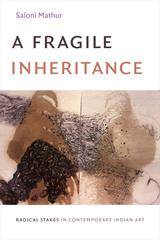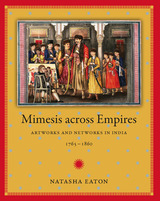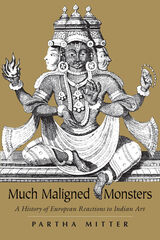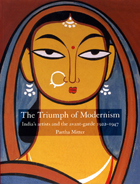

The rich and diverse cultures of India are represented in exquisite detail in this book, which begins with a simple question: what is Indian art? The answer is as complex as the history of a nation that is only sixty years old and a civilization that is one of the oldest in the world. The vocabulary of Indian art is syncretic and is shaped by a variety of religious influences such as Hindu, Muslim, and Buddhist. Persian, Turkish, Central Asian, Chinese, Japanese, as well as a host of European artistic traditions have also left their imprint on India. And the stunning topography of the subcontinent--the majestic Himalayas in the north, the dramatic deserts of Rajasthan, the fertile Gangetic plain, a southern coastline washed by the waves of the Arabian Sea, the Indian Ocean, and the Bay of Bengal--continues to shape the Indian artistic imagination.
Each thematically organized chapter in this book delves into such topics as religion and myth, epics, festivals, courtly and village life, and the natural world. The gorgeous close-ups of paintings, textiles, and sculptures in metal, ivory, and wood illuminate the aesthetics and workmanship, as well as recurrent motifs that are distinctly Indian. The objects are all part of the extraordinary Indian Art collection in the British Museum. The beauty of the smallest details are magnified and contextualized through the accompanying essays written by an expert on Indian art and culture.



Serious study of the art of India began only in the nineteenth century. This small volume provides a masterly overview of the scholarship of the past century and a half.
Mr. Chandra's purpose is twofold: to help present–day students understand their scholarly heritage, and to encourage them to re-examine their own methods and assumptions. His histographical approach enables him to pay tribute to the great achievements of the pioneers in the field and also to notice the manner in which errors of fact and method have crept into some of the contemporary thinking and writing on the subject. Rather than attempt to discuss the writings of every scholar of note, he restricts himself to a few whose work, in his opinion, clearly represents the various stages of the development of the discipline. In analyzing their contributions, he concentrates on the broad methodological thrust of their work and not on the details of their conclusions.
The study of architecture is considered first, because it was regarded by the ancient Indians as the most important of the visual arts and was the earliest of the arts to receive careful, analytic treatment in modern times. Sculpture is taken up second, and last the study of Indian painting, the area in which the most remarkable progress has been made in the last twenty–five years. In the course of the discussion many topics of broad interest are touched upon, including the relation of art history to the other disciplines, problems presented by various methods of classification, iconography and iconology, the relevance of style, the meaning of form, and the connection between artists and patrons.

The tumultuous last decades of British colonialism in India were catalyzed by more than the work of Mahatma Gandhi and violent conflicts. The concurrent upheavals in Western art driven by the advent of modernism provided Indian artists in post-1920 India a powerful tool of colonial resistance. Distinguished art historian Partha Mitter now explores in this brilliantly illustrated study this lesser known facet of Indian art and history.
Taking the 1922 Bauhaus exhibition in Calcutta as the debut of European modernism in India, The Triumph of Modernism probes the intricate interplay of Western modernism and Indian nationalism in the evolution of colonial-era Indian art. Mitter casts his gaze across a myriad of issues, including the emergence of a feminine voice in Indian art, the decline of “oriental art,” and the rise of naturalism and modernism in the 1920s. Nationalist politics also played a large role, from the struggle of artists in reconciling Indian nationalism with imperial patronage of the arts to the relationship between primitivism and modernism in Indian art. An engagingly written study anchored by 150 lush reproductions, The Triumph of Modernism will be essential reading for scholars of art, British studies, and Indian history.
READERS
Browse our collection.
PUBLISHERS
See BiblioVault's publisher services.
STUDENT SERVICES
Files for college accessibility offices.
UChicago Accessibility Resources
home | accessibility | search | about | contact us
BiblioVault ® 2001 - 2024
The University of Chicago Press









